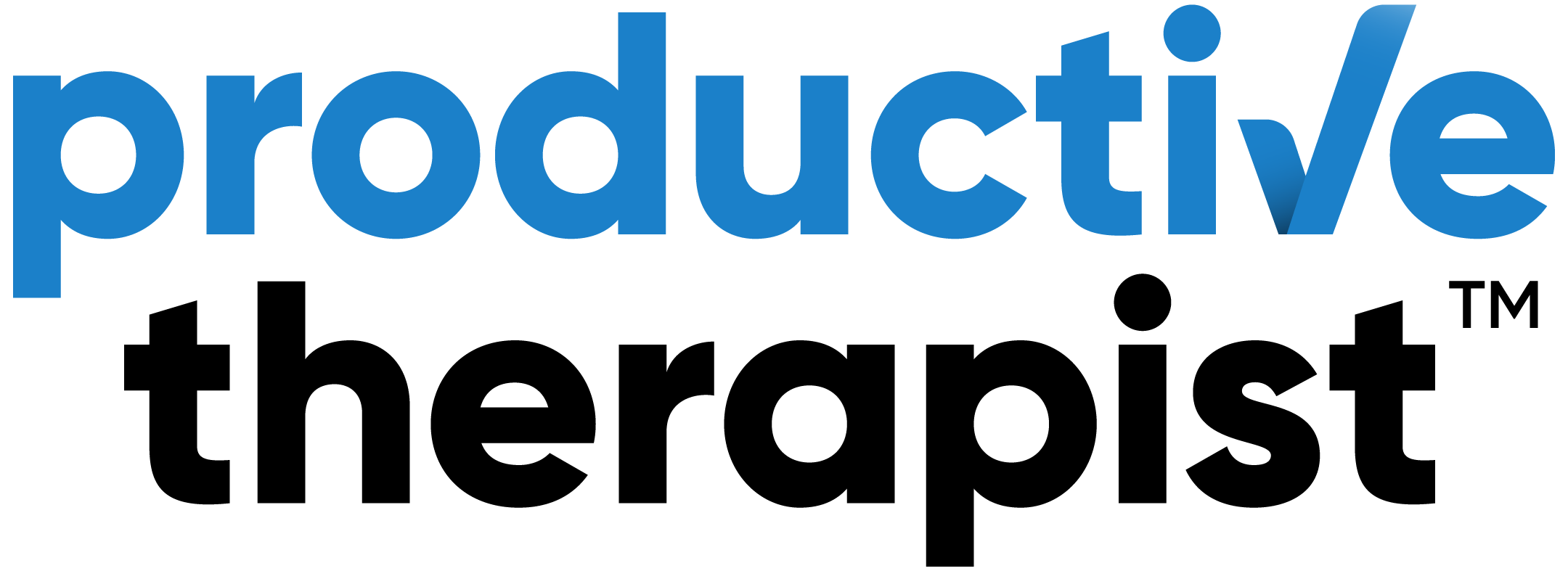Article by contributing expert Kasey Compton from ConsultWithKC
I come from a long line of people who feel great pride in being productive. My sweet granny often said the day was a waste if she didn’t accomplish something. Whether that was working in her garden, mending laundry, or cooking a meal for someone in need, it seemed she was always in motion. As my Poppy would say, I come by my pride in being productive honestly.
I love the feeling of crossing something off my list and moving on to the next task. I love the feeling of a full to-do list. And I know you do, too! Why else would you be reading up on how to be a Productive Therapist?!
So today, I’m going to give you my number one secret on how to stay productive.
Are you ready? Here it is:
Strong systems are the key to a healthy, productive business.
Even if you don’t realize it yet, you already have systems in place for every task in your practice. My goal today is to show you how to document those systems, then how to streamline and automate them so that they are strong enough to stand on their own.
Let’s dive in.
Step One: Unpack Your Kitchen
If you’ve participated in my Systemizer School before, you’ve likely heard this story, but it never seems to get old for me!
If you’re anything like me, kids’ birthday parties stress you out – especially if you’re the one throwing the party.
(I know, I know, this veered hard to left field and you’re not sure how this connects to systems. It does, I promise. Stay with me here.)
I don’t know how I managed to get myself into this mess, other than because I love my kids very much. But somehow I agreed to host a birthday party for my daughter with a tower of cupcakes that she specially requested.
All was going according to plan until I started looking for my tiered cupcake stand so I could display all those gorgeous cupcakes. I looked in its regular cabinet and what did I find? Well… it wasn’t a cupcake stand. It was a frisbee. My dog’s frisbee, in fact.
Y’all, I kinda snapped.
Months ago, my husband had hired this sweet old lady to be our housekeeper. She’s precious, but she couldn’t clean a lick. And this sweet, sweet woman had destroyed my kitchen system. So I snapped. Just a little.
I opened all the cabinets, took every single thing out, and spread all that mess on the kitchen floor until I found the cupcake stand. I made piles: things to throw away, things that needed to go somewhere else, and things that needed to be reorganized and put back in the cabinets.
Then, when my husband got home, fresh cupcakes in hand, I made him deal with the piles while I went off to arrange those cupcakes on the stand just so.
But here’s the lesson I learned from this incident: you don’t know what you have until you spread it all out on the kitchen floor and look at it.
Some things have no business being in your systems; you can just throw them away, they aren’t serving you. Some things are perfect; they belong and you want them there, they just need to be reorganized and put away nicely. Some things are great, but they don’t go there; you need to put them where they belong.
Systems are the same way.
So, how do you unpack your metaphorical kitchen?
Start with a single process and observe. While you’re observing, document the system. List every step it takes to complete that process. And I mean EVERY STEP. Be detailed and specific. Note when this process occurs and why.
List:
- Which programs you use
- How many clicks it takes
- Where the information is stored
- How long this whole process takes
Pay special attention to when/where/why the process slows down or stops. These are bottlenecks; they are no good, and we’ll talk more about how to get rid of them in a moment.
Step Two: Clean It Out
Once you know what you have, then the work really begins.
It’s hard to see inefficiencies or bottlenecks when you’re operating from memory or instinct rather than from a documented process. So now that you have documented your process, see if you can spot those places where you could get the same result in fewer, simpler steps.
I encourage you to try and cut your process in half. We call this streamlining.
The goal is to have systems that are lean and flexible and easily scalable.
You might cut steps by finding a shortcut or by deciding that some steps are unnecessary. Your goal is to eliminate half the steps, but any trimming you can do is a win. Really challenge yourself on this.
If you feel like you aren’t objective enough to challenge yourself effectively, have a partner or a friend sit down with you and challenge each piece of your process.
You/They will ask these questions about each step:
- Why do you do it this way?
- Is there an easier/faster way?
- Is this task necessary or just nice? Why?
- Is this step helping you accomplish the goal of this process?
- Could this be accomplished in another way?
Once you’ve cut out as much as possible, try to complete this process again. Are there any snags? Did you cut out a step you actually need? Do you see more steps you can trim? Take note of these and then go back in for a final look at your entire process. You want to be sure that you’ve cut all you can before you move on to the next step.
BTW, if you need a little extra help organizing your systemizing thoughts, here’s a FREE 30 Days to Systemized Calendar.
Step Three: Automate
The purpose of automation is to create a system that works without you.
Your time is valuable and the work you do in your business isn’t ‘free’, even if we sometimes tell ourselves it is. Your time is much better spent being the visionary and coming up with new ideas.
So, leverage technology to free up your time.
I want you to take that process and apply automation wherever possible so that you don’t even have to think about these tasks; they just happen. This is going to take some creative thinking, but don’t give up! It’s going to be so worth it.
Here’s an example:
Part of my consulting business is a membership experience called Mindsight Partners. There are things every new Mindsight Partner needs to know as soon as they sign up:
- How to access their online portal
- How to book a startup call with my team who will give them more important information
- How to join our private Facebook group
Now, I could personally type an email to each individual, making sure they feel welcome and comfortable and glad to be a part. That could easily take 15 minutes or more per new member. If I get three new members in a day, that’s 45 minutes gone.
To put that in context for you:
- In 45 minutes, I could plan an entirely new offering that could make me thousands of dollars.
- In 45 minutes, I could make three weeks’ worth of social media content for my business.
- In 45 minutes, I could have written a great portion of a new chapter in my book.
That 45 minutes is wasted if I spend it crafting three personalized emails for one new member that all say basically the same thing.
So, I decided to automate this step.
Now when someone signs up for my membership, they automatically receive an email that gives them those three steps for success in my membership. They are linked to Calendly where they can schedule a call with my team to get the support they need.
I don’t even have to think about it – it just happens because the system is automated. That makes me feel confident and free.
So look for places in your process where you can apply automation. Be creative and do your research here. There are no wrong answers as long as your client information is secure and you can rely on the automation to perform consistently.
Wrapping Up
I hope the tips above inspire and help you begin to document and automate your systems!
If you feel like you could use some more help to create order and efficiency in your practice, here are some tools I’ve developed to help business owners just like you:
- My new book, Fix This Next for Healthcare Providers, is available for preorder now.
- On my website, you’ll find everything we have going on and THREE incredible FREEBIES!
- In September 2021, we will be starting the much-anticipated next class of Systemizer School — the eight-week class I developed to help business owners document, streamline, and automate their systems.
I hope some of these tools and resources will help you as you start to systemize the processes in your practice. And I know they will help you become an even more Productive Therapist!

